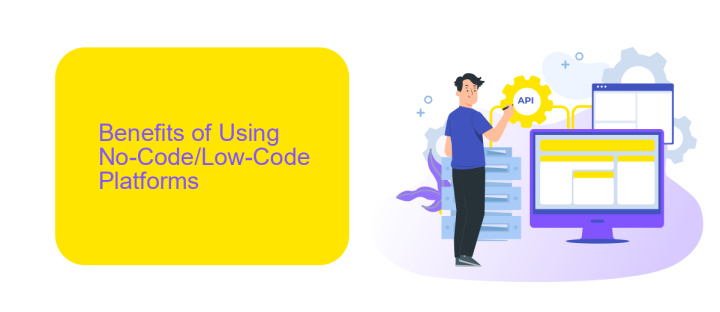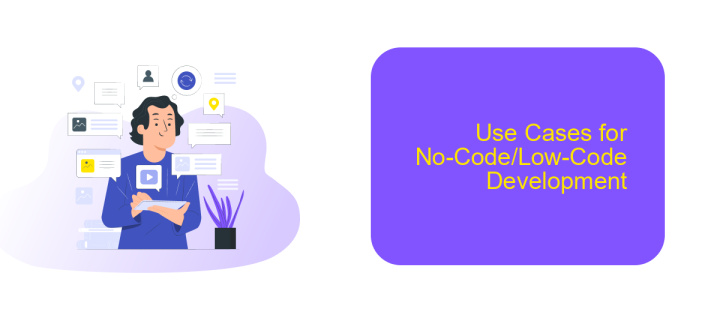No-Code Low-Code Movement
The No-Code/Low-Code movement is revolutionizing the way we approach software development, enabling individuals without formal programming skills to create robust applications. By leveraging intuitive visual interfaces and pre-built components, this movement democratizes technology, empowering more people to innovate and solve problems efficiently. As businesses seek faster, cost-effective solutions, No-Code/Low-Code platforms are becoming indispensable tools in the modern tech landscape.
Introduction to the No-Code/Low-Code Movement
The No-Code/Low-Code movement is revolutionizing the way we approach software development by making it accessible to non-technical users. This paradigm shift allows individuals and businesses to create applications and automate workflows without the need for extensive programming knowledge.
- Empowers non-developers to build applications
- Speeds up the development process
- Reduces costs associated with hiring specialized developers
- Facilitates rapid prototyping and iteration
One of the key advantages of this movement is the ability to integrate various services seamlessly. Tools like ApiX-Drive enhance this capability by offering a user-friendly platform for setting up integrations between different applications. This not only simplifies workflow automation but also ensures that data flows smoothly across systems, thereby increasing efficiency and productivity.
Benefits of Using No-Code/Low-Code Platforms

No-code and low-code platforms offer significant benefits for businesses by enabling rapid application development without the need for extensive programming knowledge. These platforms empower non-technical users to create, modify, and deploy applications quickly, reducing the dependency on specialized IT staff. This accelerates the development cycle, allowing companies to respond to market demands and customer needs more efficiently. Additionally, the intuitive drag-and-drop interfaces of these platforms simplify the design process, making it accessible to a broader range of employees.
Another key advantage is the ease of integration with existing systems and services. Platforms like ApiX-Drive facilitate seamless integrations by enabling users to connect various applications and automate workflows without writing a single line of code. This not only enhances productivity but also ensures data consistency across different systems. Moreover, the flexibility and scalability of no-code/low-code solutions allow businesses to adapt and grow their technological capabilities in line with their evolving requirements, making them a strategic asset in today’s fast-paced digital landscape.
Challenges and Limitations of No-Code/Low-Code Platforms

No-code and low-code platforms offer numerous benefits, but they also come with several challenges and limitations. While these platforms democratize software development, they are not without their drawbacks.
- Limited Customization: These platforms often provide limited flexibility in terms of customization, making it difficult to meet specific business requirements.
- Scalability Issues: As businesses grow, no-code/low-code solutions may struggle to scale, necessitating a migration to more robust platforms.
- Security Concerns: The ease of use can sometimes compromise security, as users may lack the expertise to implement best practices.
- Integration Challenges: Integrating with other systems can be complex. Services like ApiX-Drive can help simplify these integrations, but they may still require some technical know-how.
- Vendor Lock-In: Relying heavily on a single platform can lead to vendor lock-in, limiting future flexibility and potentially increasing costs.
Despite these challenges, no-code and low-code platforms continue to evolve, offering increasingly sophisticated solutions. However, it is crucial for businesses to carefully consider these limitations when adopting such technologies to ensure they align with long-term goals.
Use Cases for No-Code/Low-Code Development

No-code and low-code development platforms are revolutionizing the way businesses approach software creation. These platforms enable users with little to no programming experience to build applications, automate workflows, and integrate systems seamlessly.
One of the primary use cases for no-code/low-code development is rapid prototyping. Businesses can quickly create and test new ideas without the need for extensive coding expertise. This accelerates the innovation process and reduces time to market.
- Automating business processes to improve efficiency
- Building custom dashboards and reports for data analysis
- Creating customer-facing applications for improved engagement
- Integrating various software tools and services, such as using ApiX-Drive to connect multiple applications
Another significant use case is in the realm of digital transformation. Companies can modernize legacy systems and integrate new technologies effortlessly. The use of tools like ApiX-Drive simplifies the integration process, allowing businesses to connect diverse applications and automate data flows without the need for complex coding.


The Future of No-Code/Low-Code Development
The future of no-code/low-code development is set to revolutionize the way businesses approach software creation. As technology continues to evolve, these platforms will become even more sophisticated, enabling users to build complex applications with minimal technical expertise. This democratization of software development will empower more individuals and small businesses to innovate and compete with larger enterprises, leveling the playing field and fostering a new wave of creativity and productivity.
Integration capabilities will also see significant advancements, making it easier for different systems to communicate seamlessly. Services like ApiX-Drive will play a crucial role in this evolution, allowing users to effortlessly set up integrations between various applications and automate workflows without writing a single line of code. As these tools become more user-friendly and powerful, the barrier to entry for digital transformation will lower, paving the way for a more connected and efficient technological ecosystem.
FAQ
What is the No-Code/Low-Code movement?
Who can benefit from No-Code/Low-Code platforms?
How secure are No-Code/Low-Code platforms?
Can No-Code/Low-Code platforms handle complex integrations?
What are some common use cases for No-Code/Low-Code platforms?
Apix-Drive is a simple and efficient system connector that will help you automate routine tasks and optimize business processes. You can save time and money, direct these resources to more important purposes. Test ApiX-Drive and make sure that this tool will relieve your employees and after 5 minutes of settings your business will start working faster.

